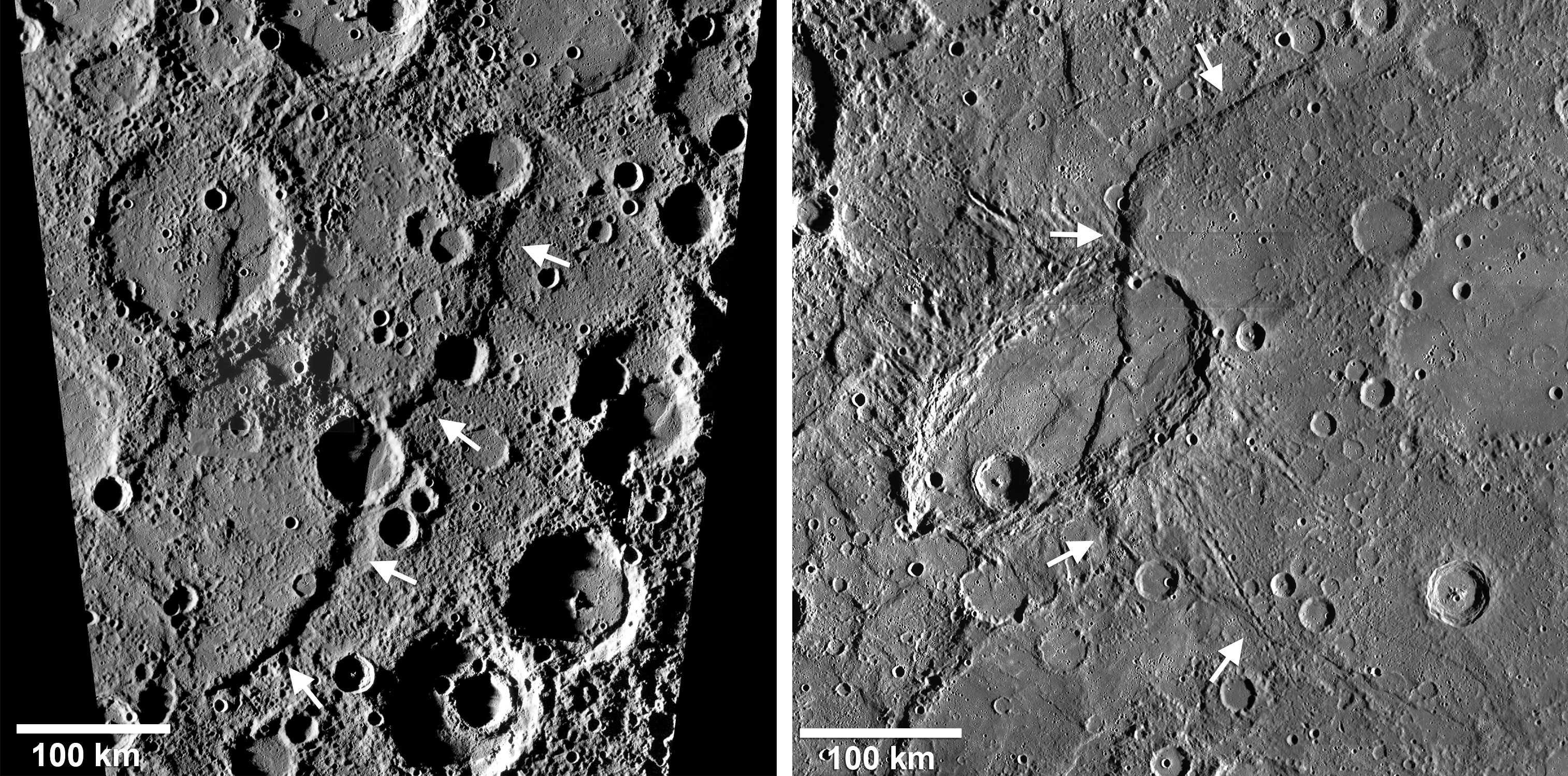Mercury may not have shrunk nearly as much as scientists think

Mercury may not have shrunk nearly as much as scientists previously thought, potentially solving the mystery posed by the planet's continuing quakes.
Mercury is the smallest and innermost world in the solar system, and was a mysterious planet until NASA's MESSENGER spacecraft became the first probe to orbit Mercury in 2011. The only other visits it has received were the flybys made by NASA's Mariner 10 probe nearly 50 years ago, although a new Japanese-European mission dubbed BepiColombo will reach the planet later this decade.
Mariner 10 revealed Mercury was covered in large fault scarps, or cliff-like structures that look like giant stair-steps in the landscape; using data from MESSENGER, scientists calculated that these scarps can reach 600 miles (1,000 kilometers) long and more than 1.8 miles (3 km) high.
Related: Photos of Mercury from NASA's Messenger Spacecraft
Fault scarps arise when rocks are pushed together, with one side thrust upward with respect to the other along faults, or fractures, in a planet's crust. The most widely accepted model of the origin of Mercury's large fault scarps is that they are essentially wrinkles that formed as the planet's interior cooled over time. The cooling caused Mercury to shrink, in turn shriveling its crust like the skin of a raisin.
Previous research suggested that Mercury may have "super-contracted" by as much as 8.7 miles (14 km) in diameter. In new research, Thomas Watters, a planetary scientist at the National Air and Space Museum in Washington, D.C., estimates the planet contracted by no more than 1.2 to 2.5 miles (2 to 4 km).
Watters analyzed orbital images and topographic data from MESSENGER to develop a model of Mercury's shrinking. He only incorporated landforms with clear evidence they were physically connected to contractional faults rooted deep into the planet, as opposed to more shallow features less likely to have direct links to Mercury’s contraction.
Get the Space.com Newsletter
Breaking space news, the latest updates on rocket launches, skywatching events and more!
All in all, these new findings suggest that "Mercury has retained more of its primordial interior heat than previously thought," Watters said. This discovery might help explain why MESSENGER found small fault scarps less than 50 million years old, which scientists believe are evidence that Mercury may still rumble with earthquakes, or "Mercuryquakes": The extra heat may help keep Mercury geologically active.

These new estimates do fly in the face of conventional wisdom, which argues that the smaller the body, the more quickly it cools and becomes geologically inactive, Watters noted. "Mercury is showing us an alternative evolutionary path," he said. "Small rocky planets can retain their interior heat and experience less overall global contraction. This slow cooling may drive very recent and even current tectonic and seismic activity on Mercury."
Mercury may have held onto its primordial heat due to the insulating effect of a thick "megaregolith" — that is, a layer of fractured bedrock underneath its regolith, or the dust, soil and rock at the planet's surface. Although Mercury should have been cooling since its formation, this porous layer it developed over time may have kept a significant amount of this heat from percolating upward and outward, a bit like insulating foam does in houses.
"The crust of Mercury, like the crust of the moon, has been heavily and deeply fractured over billions of years by giant impacts," Watters explained. This fractured porous rock "has likely greatly inhibited interior cooling."
"If small planets like Mercury, and even smaller bodies like the moon, can retain their interior heat and remain geologically active after billions of years, then we can expect that small rocky exoplanets may follow the same evolutionary path," Watters added. (A 2019 study found the moon may still experience quakes due to effects such as contraction, as well as tidal forces from Earth’s gravitational pull.)
Watters detailed his findings Jan. 14 in the journal Communications Earth & Environment.
Follow us on Twitter @Spacedotcom and on Facebook.
Join our Space Forums to keep talking space on the latest missions, night sky and more! And if you have a news tip, correction or comment, let us know at: community@space.com.

Charles Q. Choi is a contributing writer for Space.com and Live Science. He covers all things human origins and astronomy as well as physics, animals and general science topics. Charles has a Master of Arts degree from the University of Missouri-Columbia, School of Journalism and a Bachelor of Arts degree from the University of South Florida. Charles has visited every continent on Earth, drinking rancid yak butter tea in Lhasa, snorkeling with sea lions in the Galapagos and even climbing an iceberg in Antarctica. Visit him at http://www.sciwriter.us









